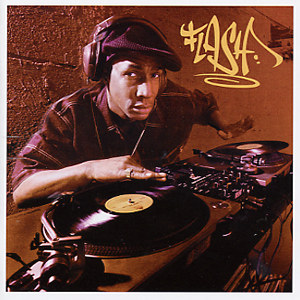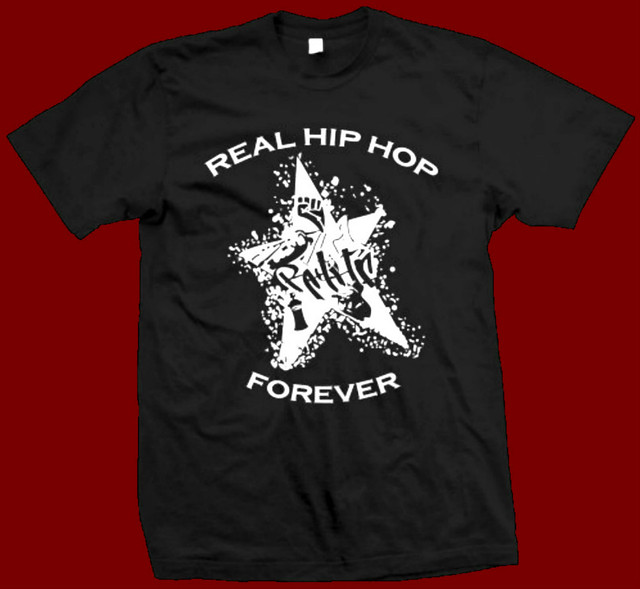 What Is Hip Hop?? Where Did It Begin?? In 1955 a man by the name of James Brown began his slow rise to fame. Little
did he know, he was about to become a prominent influence on a majority of the
music that followed him. His Afro centric beats, rooted directly in African
tradition with their simple, politically charged lyrics and the dances that
went with them, would lay the foundation of a new culture called hip hop. Throughout the 1960’s, at the height of the Civil Rights Movement, Gil Scott
Heron, The Last Poets and the Watts Prophets all joined hands with Brown as
being strong black voices at a time of racial tension. Brown’s songs such as
“Say It Loud (I’m Black And I’m Proud)” and poems by Heron such as “The
Revolution Will Not be Televised” became anthems for black people in the United States. In 1970, at 1520 Sedgwick Ave.
West Bronx, New
York City. Clive Campbell, AKA DJ Kool Herc, a
Jamaican immigrant from Kingston,
started deejaying at neighborhood block parties in his apartment’s recreation
room. It was there that Herc developed the style that would become the
blueprint for a new wave of urban music called hip hop. In 1973, Herc, who was
deejaying his little sister’s birthday party, used two turntables, a technique
he borrowed from the Manhattan club deejays, and would get two copies of the
same record so he could focus on a small part of that record that he called the
break. This part of the record was the part that Herc observed dancers
utilizing the most, so he isolated and prolonged it. As one record reached the
end of the break, he would cue the other record back to the beginning of the
break, thereby extending a relatively small part of a record into a long
"five-minute loop of fury". According to Herc himself, at these
parties it was customary of him to play what he called a “merry-go-round” that
included duplicate copies of three records – James Brown’s “Clap Your Hands,
Stomp Your Feet,” The Incredible Bongo Band’s “Bongo Rock,” and Babe Ruth’s
“The Mexican.” These three records, especially the James Brown record, became
customary to hear at a Kool Herc party. At a young age, Herc began spray painting graffiti on the subway trains in New York City with a local tagging crew – a tradition that
came from the concept of early graffiti thousands of years ago and began to
re-emerge in Philadelphia, Pennsylvania. Political activists used it as
a form of expression in the late 1960’s and early graffiti writers such as Top
Cat, Cool Earl, and Cornbread also began writing their “signatures.” By 1970,
“TAKI 183” and “Tracy 168” could be seen on almost every subway train in
Philly. Around 1971, graffiti had moved to New York City and people such as Rammellzee
(also an MC), Zephyr, Crash and Futura 2000 became prominent figures. When Herc
began writing graffiti, it tied the two movements together and formed it as one
movement that would later be known as hip hop. Later DJs such as Grandmaster Flash and Grandwizard Theodore refined and
developed the use of break beats by using headphones for cueing and inventing a
technique now known as “cutting.” During the early 1970s, break dancing, or B-Boying/Girling arose during
block parties, as B-Boys and B-Girls got in front of the audience to dance in a
distinctive, frenetic style. The style was documented for release to a world
wide audience for the first time in a movie called Beat Street. As was tradition in Herc’s hometown’s popular music of the time, dancehall
music, performers began speaking while the music played in a sort of rhyming
toast. These were the original hip hop MCs. Herc focused primarily on deejaying,
and began working with two MCs, Coke La Rock and Clark Kent—the first MC crew.
Herc named his new crew Kool Herc & the Herculoids. Originally, these early
rappers focused on introducing themselves and others in the audience (the
origin of the still common practice of "shouting out" on hip hop
records). These early performers often MC'ed for hours at a time, with some improvisation
and a simple four-count beat, along with a basic chorus to allow the performer
to gather his thoughts (such as "one, two y'all, to the beat,
y'all").Later, the MCs grew more varied in their vocal and rhythmic
approach, incorporating brief rhymes, often with a sexual or scatological
theme, in an effort at differentiating themselves and entertaining the
audience. The style of the early MC was not very different from an
African-American tradition called “the dozens.” While Kool Herc & the
Herculoids were the first hip hoppers to gain major fame in New York, more MC teams quickly arose.
Frequently, these were collaborations between former gang members, such as
Afrikaa Bambaataa's Black Spades (now a large, international organization known
as the Universal Zulu Nation). Melle Mel, an MC with The Furious Five, is often
credited with being the first hip hop vocalist to call himself an
"MC." In 1979, hip hop had its first two radio hits, “King Tim III” by a funk
group called The Fatback Band featuring an MC who went by the pseudonym King
Tim III, and the song that lead to hip hop’s worldwide fame, the chart topping
“Rapper’s Delight” by The Sugarhill Gang. Although there were many early MCs that recorded solo projects of note, such
as DJ Hollywood, Kurtis Blow, and Spoonie Gee, real notoriety didn't appear
until later with the rise of soloists with larger-than-life stage presence such
as Run DMC and LL Cool J. Most early hip hop was dominated by groups where
collaboration among the members was integral to the show. Because of this, you
would have MC groups making songs where one MC would finish another’s rhyme or
say a phrase within that person’s rhyme. In the early eighties, certain MC’s decided to expand their abilities from
simply rhyming to expressing themselves by turning their voices into
instruments. Although he wasn’t the first to use vocal percussions, Doug E.
Fresh was the first hip hop artist to use his voice to imitate a drum machine.
This style of MC’ing would later be known as beatboxing. This lead to his
appearance in the movie Beat
Street, the forming of Doug’s crew called The Get
Fresh Crew, and the inspiration for The Fat Boys MC The Human Beat Box’ name.
Later beatboxers include Biz Markie, Rahzel, Kenny Muhammad, and Roxorloops. In the early stages of hip hop, the DJ dominated the show. It was the MC’s
job to promote his DJ and nothing more. As time passed, however, MC’s jobs grew
more complex and they began to slowly outshine their musical counterparts. By
1988, hip hop had finally become a prominent force in music and it was due to
the MC’s. DJs such as Scott La Rock, Eric B., and DJ Polo, who were all
respected DJs in their time, rode in the back seat to stardom behind their MC
counterparts KRS-One, Rakim, and Kool G Rap (respectively). This era was known
as the beginning of the Golden Age of hip hop. Today, most up-and-coming MC’s, or emcees as they are now known, have taken
some influence, whether directly or indirectly, from the artists of the Golden
Age, especially Rakim. While on the mainstream today most artists are making
music very different from their hip hop roots (commercial rap music as many
die-hard hip hop fans call it), it all still undeniably comes from Kool Herc
and his two turntables.
From just a music genre, hip hop transformed into a culture that embodies all
the aspects of a real culture by the definition given in anthropology, which
is, among other things, the study of culture itself. It became a new way of
thinking, a new outlet for education. The original culture has 4 parts:
1.Djing
2.MCing (there is a distinct difference bewteen a rapper and MC. Rapping came from
hip hop but isn’t an actual element)
3.Breakdancing (B-Boying/Girling)
4.Graffiti Art
Over time new elements such as beatboxing developed. KRS-One lists 9 elements of hip hop culture: 1. Break dancing
2. Rapping
3. Graffiti art
4. DJing
5. Beatboxing
6. Street fashion
7. Street Language
8. Street Knowledge
9. Street Entrepreneurialism |



















